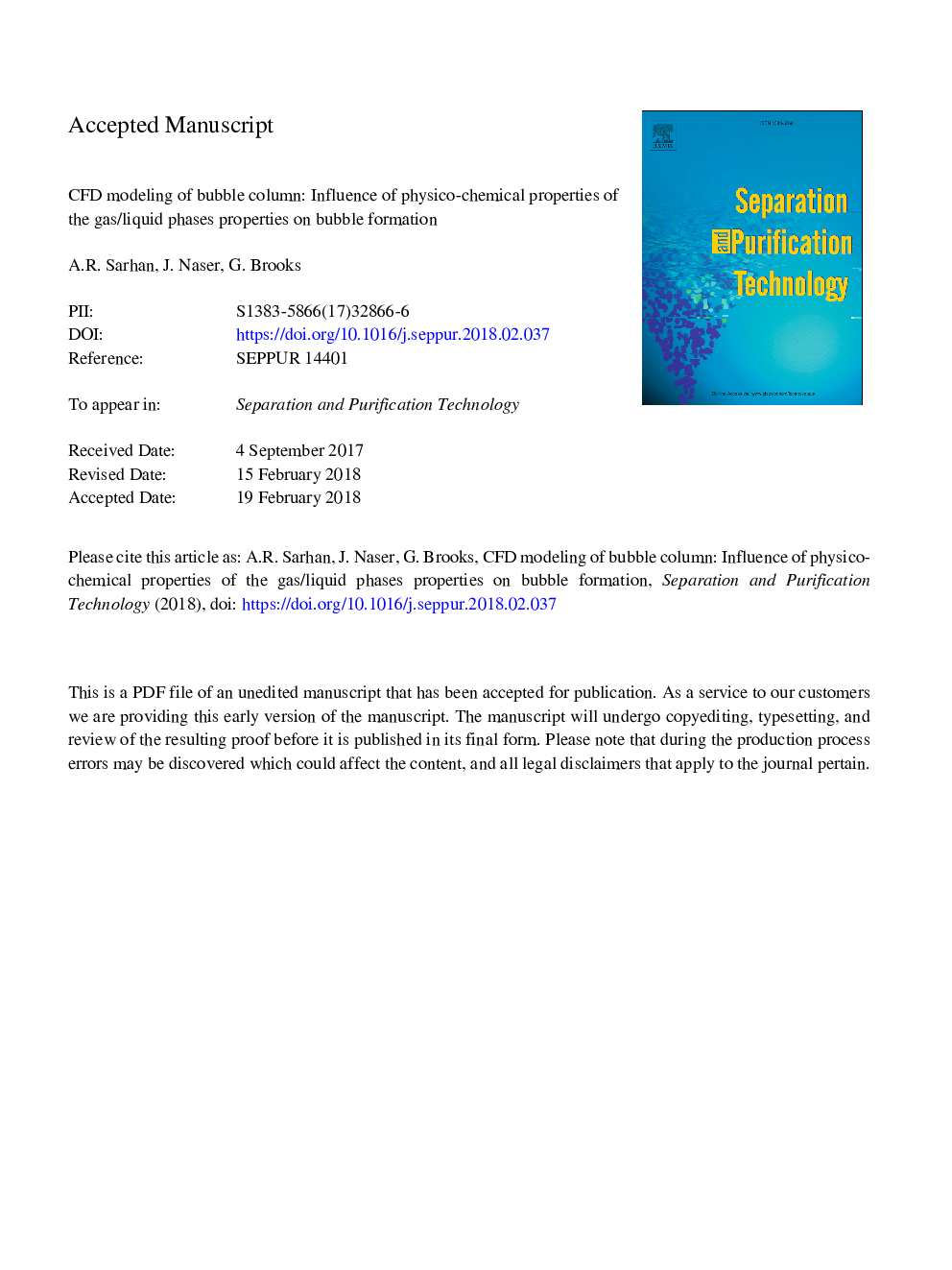| Article ID | Journal | Published Year | Pages | File Type |
|---|---|---|---|---|
| 7043768 | Separation and Purification Technology | 2018 | 26 Pages |
Abstract
Computational fluid dynamics (CFD) has been widely used to study the hydrodynamics of bubble column reactors. However, the interaction between the different phases, which are in fact intimately linked, and the effect of their physical properties on the dynamics of the bubbles are still not well understood. In this study, the population balance equation (PBE) is coupled with CFD model to investigate the effect of liquid and gas phases physico-chemical properties on bubbles formation and the hydrodynamic characteristics in bubble column reactors. The coupling is realized using AVL FIRE v.2017 software, and the predicted results are validated against published experimental data. User subroutines are written using FORTRAN to incorporate the scalar transport equation source term for bubble break-up and coalescence. The predicted results were in reasonable agreement with experimental observations and available literature results, since the model has been able to predict the effect of gas flow rate on the gas holdup in bubble column within the range of ±7%. The simulations showed that the average gas holdup increase with the increase in superficial gas velocity and gas phase density, and decrease with the increase in liquid phase density. It was also found that Sauter mean bubble diameter increases with the increase in liquid density and decreases with the increase in gas density. Finally, the bubble rise velocity increased when water was used as a continuous phase. On the other hand, the increase in gas density causes a decrease in the bubble rise velocity.
Related Topics
Physical Sciences and Engineering
Chemical Engineering
Filtration and Separation
Authors
A.R. Sarhan, J. Naser, G. Brooks,
